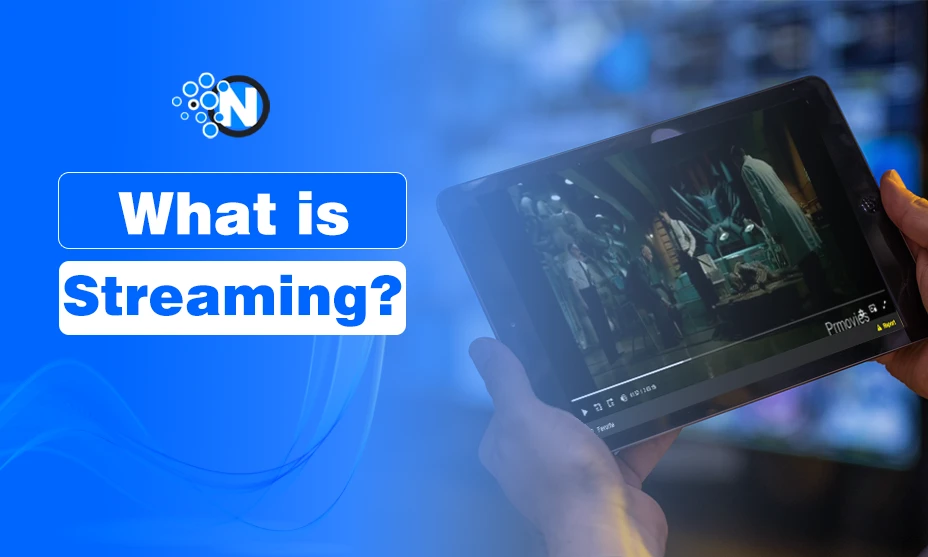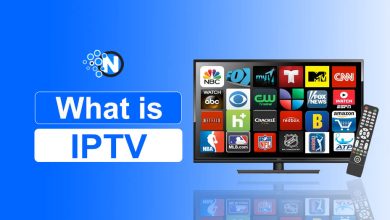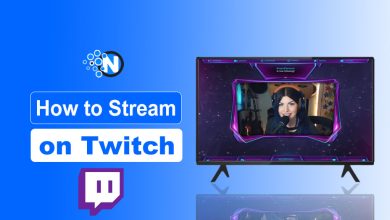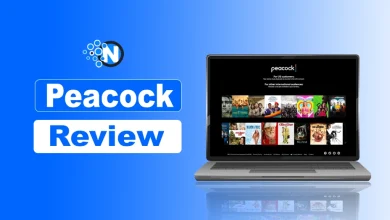What is Streaming? How Does Online Streaming Work?

The way people consume entertainment content has evolved a lot during the past few years. Online streaming has seen a huge shift since the introduction of platforms like Netflix and Apple TV. These days, almost everyone prefers consuming content via online streaming instead of downloading it.
But what is streaming in reality? That’s precisely what I am going to discuss in this well-detailed and comprehensive blog post. I’ll describe online streaming and its proper working mechanism here. Let’s start.
What is Streaming?
Streaming is the process of consuming video or audio files online on digital devices without downloading any content. It’s a continuous transmission of entertainment data directly from the main server to a client’s device.
In simple words, streaming happens when you watch movies online or listen to podcasts on your PC or phone without downloading.
The film starts as soon as the data is received on your device. You can carry on watching even when the server is sharing the rest of the data. Online streaming has become popular since it does not require downloading files that take a huge part of your device’s storage. It also takes a lot of time to complete.
On the other hand, you can start streaming right after you hit the “play” button. However, the overall experience can be enhanced if you know how to choose the right streaming site that suits your needs the best.
Major Types of Streaming:
There are two major types of streaming. Their details are shared below:
1. Video Streaming
As the name suggests, video streaming is about watching video content such as movies, shows, sports matches, or random videos on your device. There are a lot of popular platforms that offer these services, including Netflix and Amazon Prime. Here’s a brief overview of its further types:
2. Movie Streaming
People utilize platforms like Netflix to watch multiple movies and TV shows online. There’s no need to download movies anymore. It has gained the attention of global cinephiles and billions of people are using OTP platforms for film streaming..
3. Audio Streaming
Audio streaming, on the other hand, is listening to audio files on your PC or mobile phone. It can either be a podcast, an audiobook, or a song. Platforms like Spotify and Apple Music are famous for this type of streaming.
Some of its types include:
- Music & Podcast: These days, people listen to music online without downloading it from their phones. It’s available on a number of different platforms. The same goes for podcasts.
- Online Radio: Listening to online radio also comes under the umbrella term of streaming. This type of streaming has opened doors for different independent channels to broadcast content to people.
4. Sports Streaming
There are a lot of sports streaming services available out there. They only show content related to different sports, including football, cricket, basketball, etc. This content can be live matches, highlights, news, etc. Their examples include DAZN and ESPN+ or some free platforms like Crackstreams, and Methstream.
5. Video Game Streaming
Another type that has become extremely popular is video game streaming. Gamers from all around the world broadcast their videos to users. Platforms like Twitch and YouTube Gaming offer a platform for both streamers and viewers to connect with each other. It has now become a multi-billion-dollar industry.
6. Fitness Streaming
Fitness streaming involves streaming video/audio content that is only about gyms and workouts. It can be tutorials, online training sessions, or
How Does Online Streaming Work?
Understanding the working functionality of the tech that powers streaming platforms is easy. Here’s a complete overview of it:
1. Content storage and hosting
First of all, entertainment companies store and host their content on a main server. The servers are designed to host different types of content, such as movies, shows, songs, etc., according to the platform’s requirements.
2. Encoding and compression
The entertainment content cannot be shared in simple formats. It is first encoded and compressed using different techniques and formats. It mainly depends on the service and material type. For example, servers might encode videos using different codecs, such as H.264 and H.265.
3. Content Delivery Networks
Usually, only a few servers can handle delivering streams to millions of viewers out there. So, companies use content delivery networks.
These networks include a lot of servers that are spread all across the world in multiple locations. Each server contains a copied version that is shared with the people. It helps handle the load and makes transmission easy.
4. Content Receiving on User Devices:
Once content is fully encoded, CDNs share it with user devices. These streaming devices are of different types, such as Amazon Fire TV Stick and Apple TV 4K.
They receive the encoded video/audio and decode it using different technicalities. After this, the video is displayed on your screen. Servers keep sharing streams constantly, so there’s no lag or buffering.
5. Bitrate Adaptiveness
In most cases, companies produce videos of high quality. Streaming services broadcast it with the same quality. However, not all users have the Internet speed fast enough to run high-quality videos.
So, services employ a technique called Bitrate Adaptiveness. It dynamically adjusts the quality and bitrate of the content according to the user’s Internet speed. Bitrate Adaptiveness allows users to keep on streaming smoothly without facing quality issues.
6. User interface
To make the user experience better, companies design their service’s interface carefully. They add different features like searching, categories, film description, etc., for the user’s convenience. They also keep login and bundle-sharing procedures in mind. Most services optimize their platform for both web and app users.
How Does Live Streaming Work?
Live streaming works a little differently from stored content streaming. That is because it is streamed as the events take place in real-time.
The whole procedure stays the same. However, instead of storing the content, it is transmitted directly through servers. So, people get to enjoy it in real-time with only a difference of a few seconds. examples of these streaming are live news, live sports matches, etc.
Paid Vs Free Streaming:
There are both paid and free streaming platforms available out there. As the words explain, paid services charge people on a monthly subscription basis. On the other hand, free yet official services do not charge people at all.
Characteristics of Paid Streaming
- It involves a monthly subscription that offers access to all the content available on the site.
- It’s a premium-level service offering maximum user-friendliness.
- They are completely legal to consume.
- Users do not have to face advertisements or limited access.
- Netflix, Disney+, Hulu, etc., are its examples.
Characteristics of Official Free Streaming
- No subscriptions or fees are required to access these platforms.
- Their user-friendliness might not be as good as paid services.
- These services include ads.
- Their content might be limited.
- YouTube, Tubi, Pluto TV, etc., are their examples.
Cautionary Points About Unofficial Free Streaming
Using unofficial free streaming sites can help you save a lot of bucks while getting access to a large content library. However, there are a few points that you should be cautious about. I’ve listed them below:
- Using these services is considered piracy since they do not contain any content legally.
- They can get you into legal trouble for consuming pirated content.
- Always consider the safety of the streaming platform before using it.
- They contain a lot of advertisements, and some of them might direct you to harmful websites.
- Some of these platforms are Letflix, YesMovies and HuraWatch.
Region-Based Streaming
Online streaming has become a common and normal thing all around the world. Platforms like YouTube have given access to almost all the countries around the world. You can use them without any restriction, no matter where you are.
However, some companies only employ region-based streaming. They used the region-locking technique to block access for people using their geographical location. They offer access based on a person’s IP address.
There are a lot of reasons why companies employ region-based streaming. Some of the major ones are discussed below:
1. Licensing
Licensing is one of the biggest reasons why some companies do not broadcast in certain locations. These companies buy distribution rights from the main creators.
These creators apply licensing terms that limit services from broadcasting content all over the world. For example, a film production company might not want to premier it in certain countries. So, they will simply ask the broadcasters not to release it in selected regions.
2. Market Popularity
Companies spend a lot of money to buy rights and set up servers to broadcast in certain locations. As a result, they expect people to consume the content by paying so that the company can make a profit.
However, some content might not be very popular among people in some countries. As a result, they will not buy subscriptions, and broadcasters will not make a profit. So, companies avoid broadcasting in order to avoid loss.
3. Content localization
Some content is only popular locally and not much appreciated in foreign. For example, some local Spanish dramas might not be popular in Australia. So, such content is blocked for foreign people to access.
Role of VPN in Streaming
VPN services are playing a great role in the streaming world. As I have vividly explained above, not every stream is available in every region. So, people use a VPN to bypass this restriction when streaming. These tools/software change or mask the IP address of a person and use another IP address. As a result, users get access to regional-based streaming sites.
However, keep in mind that this technique might not always work. Some platforms, like Peacock, have strong security protocols. They cannot be accessed even with a masked IP address.
Some people use VPNs while using unofficial free streaming services. It helps them stay safe from any malware attack that might come from such websites. Some VPNs have adblockers as well, which allows users to avoid on-site advertisements.
Is Using a VPN for streaming legal?
Absolutely. There’s nothing wrong with using a VPN service for legal streaming. It simply changes your device’s IP address to let you access locked streaming sites. However, it’s important to abide by any local law or regulation. So, stay updated with these regulations to avoid facing any inconvenience.
Future of Online Streaming
Online streaming has become a normal thing these days and is constantly moving towards betterment. Companies are introducing a lot of new features and techniques to improve user experience.
For example, AI-based customization might help companies offer better content suggestions to users based on their interests. Similarly, some platforms incorporate a pay-per-view approach, which will allow users to pay only for the content they watch.
Final Words
That’s pretty much all the important details you need to know about streaming. It is a process of continuous content transmission through servers to a user’s device. Companies are using it to deliver both videos and audio to users.
Online streaming works simply. A company stores content on its servers. A streaming platform transmits it by encoding it through a proper CDN system. Users receive this content on their devices and start enjoying it. The above-mentioned topics give a complete overview of different types of streaming and how they work globally in a clear way.
Frequently Asked Questions (FAQs)
Can platforms broadcast old content through streams?
Yes. Old content is also being broadcast through online streaming.
Does cable TV include streaming?
No. Cable TV isn’t a part of streaming.
Why does a stream buffer a little before starting?
Devices buffer a little to load some content so that you can keep on watching smoothly later on.
What is the ideal speed of the internet for smooth streaming?
It depends on your service and video quality. However, you might need a minimum of 6-9Mbps speed for streaming in 1080p.




